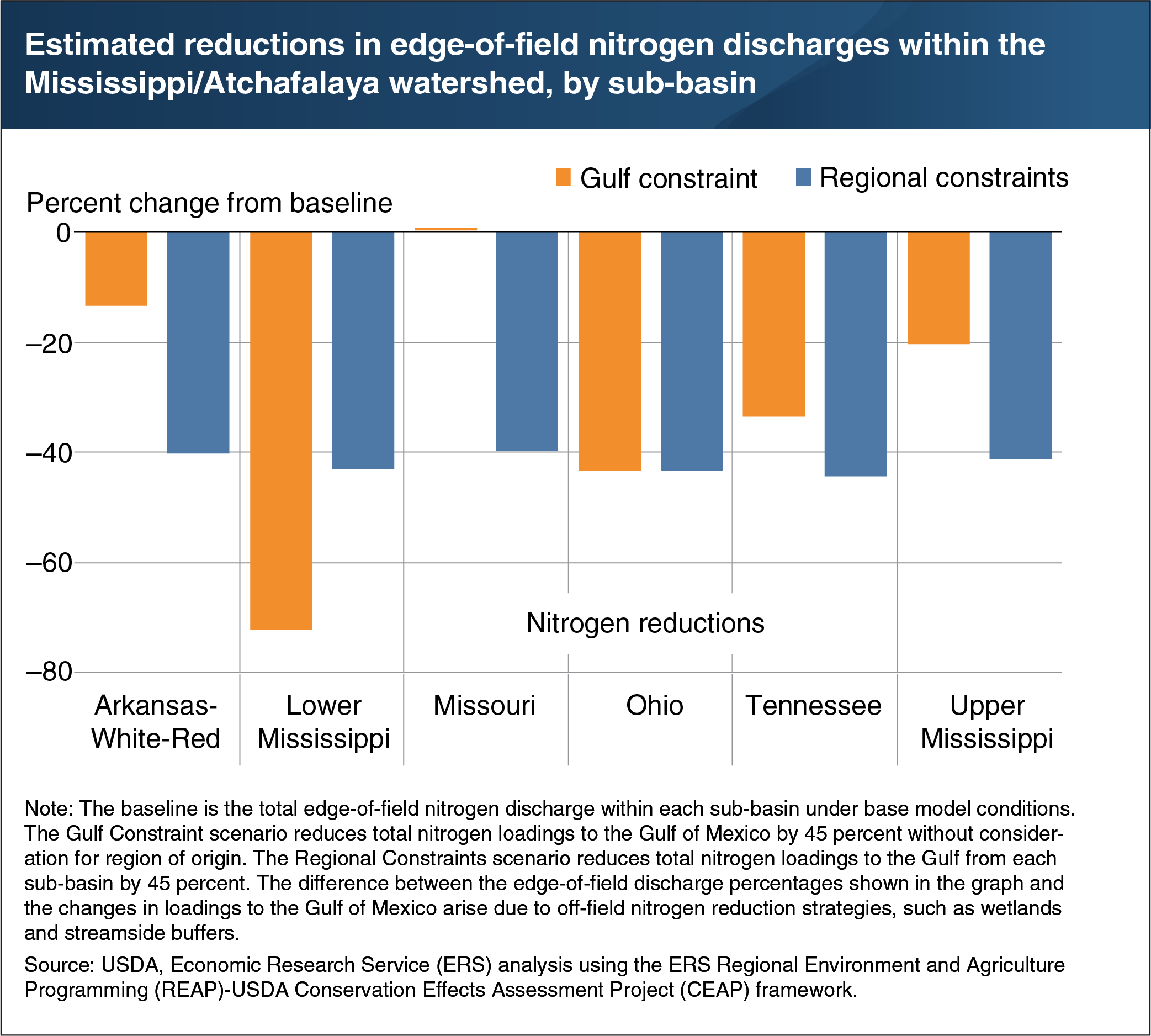Regional strategies for reducing nitrogen loadings to the Gulf of Mexico differ according to how policy objectives are formulated
- by Elizabeth Marshall and Marcel Aillery
- 4/22/2019

Every summer, a “hypoxic zone” forms in the Gulf of Mexico where dissolved oxygen is too low for many aquatic species to survive. This zone is fueled by nutrient (nitrogen and phosphorus) runoff from the Mississippi/Atchafalaya River Basin, a region containing about 70 percent of U.S. cropland. Recent ERS research modeled two scenarios for reducing nitrogen loadings to the Gulf of Mexico by 45 percent. The Gulf Constraint scenario reduces nitrogen loadings at the lowest cost, without consideration of the regional origin of nutrients. The greatest nitrogen reductions would occur in the Lower Mississippi sub-basin (reduced to 72 percent of the baseline amount) and in the Ohio sub-basin (43 percent). Because these regions are relatively close to the Gulf and have relatively high baseline nitrogen discharges per acre (i.e., high potential to reduce discharges by adopting low-cost conservation practices), the estimated cost of reducing nitrogen loadings originating here is generally lower than elsewhere. On the other hand, the Regional Constraints scenario evenly reduces nitrogen loadings by 45 percent from each of the sub-basins. Under the Regional scenario, total edge-of-field nitrogen reductions (and aggregate costs) are projected to rise relative to the Gulf scenario for the Tennessee, Upper Mississippi, Missouri, and Arkansas-White-Red sub-basins and drop for the Lower Mississippi region. This chart appears in the ERS report, Reducing Nutrient Losses From Cropland in the Mississippi/Atchafalaya River Basin: Cost Efficiency and Regional Distribution, released September 2018.

